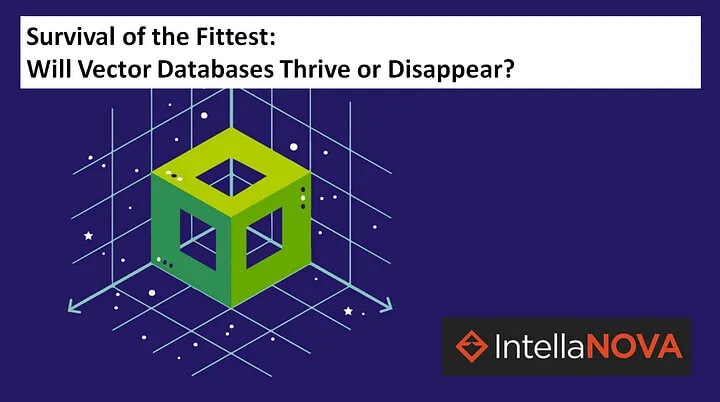
Survival of the Fittest: Will Vector Databases Thrive or Disappear?
Vector databases have been revolutionary solution in the world of data management, offering specialized functionality for vector search and similarity. In the last couple of years, we saw millions of dollars invested in vector database startups, such as Pinecone, zilliz, Milvus, Weaviate and many others. However, the tech landscape has been evolving at rapid pace, and many experts in AI and data are predicting the decline of standalone vector databases. In this article we will discuss why the future of these systems looks uncertain:

From Niche to Norm: Vector Search Becomes a Standard in Major Databases”
A major shift is happening as leading databases, which includes both SQL and NoSQL, are incorporating vector search capabilities directly into their platforms. For instance, PostgreSQL now supports vector similarity search through PGVector extensions, while MongoDB, Redis, Elasticsearch, Neo4j, and Apache Cassandra all provide vector search natively within their existing frameworks. Even industry giants like Databricks and Snowflake are integrating vector search into their broader data platforms. As these established databases absorb vector search functionalities, the need for a separate vector database system diminishes.

All-in-One Data Powerhouses: Unified Platforms Render Specialized Databases Obsolete”
The industry’s move towards unified data platforms is another key factor driving this shift. Platforms like Snowflake and Databricks are designed to manage structured, unstructured, and semi-structured data, and now they have also introduced vector search capability. This all-in-one approach makes specialized vector databases redundant. As these platforms continue to evolve, their ability to handle diverse data types and workloads grows. The result of which is the declining need of standalone vector databases.
Tech Innovation Levels the Field: GPUs and Smarter Indexing Are Dethroning Vector Databases
Advancements in hardware, like GPUs and TPUs, are helping in leveling the playing field here. Furthermore, companies are resoluting to a more efficient indexing algorithms. Companies like Google and AWS are heavily investing in this space. This has enabled general-purpose databases to handle vector workloads with ease. These advancements reduce the performance advantage that once made specialized vector databases essential. Hence, we are seeing more flexible systems to take over.
Cut the Complexity: Why Unified Solutions Offer a Cheaper, Smarter Alternative
Operating a vector database requires specialized knowledge and often incurs significant operational costs. For many organizations, maintaining a separate system for vector search capabilities doesn’t justify the expense. This is especially true when these capabilities are increasingly being integrated into existing data infrastructure. When you look at the options, the option of unified platforms, which offers a simpler, more cost-effective alternative, makes them highly attractive. As they will help your business to streamline cost and operations.

Why Reinvent the Wheel? Vector Search Is Now an Add-On, Not a Standalone Solution
From a technical standpoint, vector search is essentially an indexing technique rather than an entirely new data storage system. This means it can be easily incorporated into existing databases without overhauling the architecture. From a business perspective, you are unlikely to adopt a standalone database when your current systems can already support vector search. The costs associated with training, vendor management, and engineering make it less appealing to maintain a separate vector database when existing solutions suffice.
The Future of Vector Databases
Until recently, vector databases played a revolutionary role in data management, their specialized functionality is being absorbed by more versatile and unified platforms. As the industry trends towards generalist solutions that handle a wide range of data types and workloads, the need for a separate vector database is rapidly declining. In the fast-paced world of technology, adaptability is key, and the standalone vector database is increasingly at risk of becoming obsolete.



